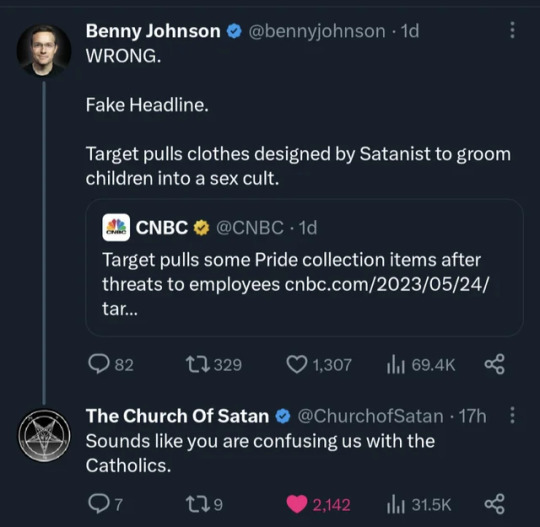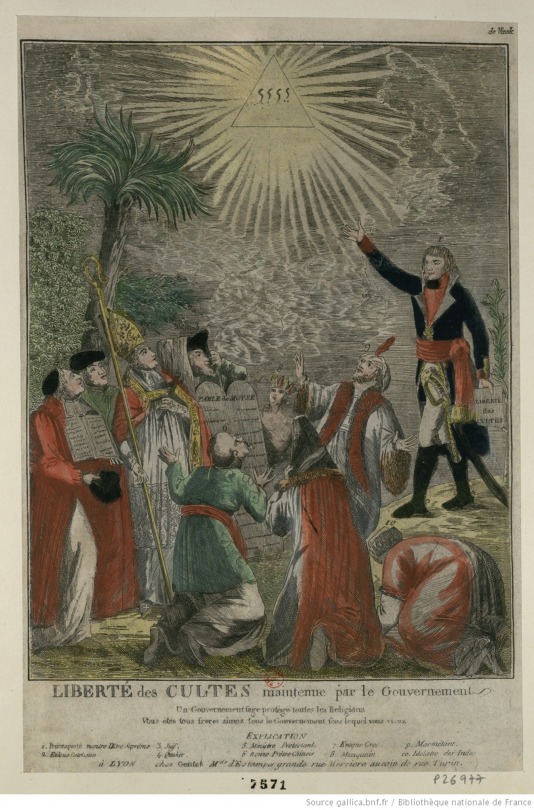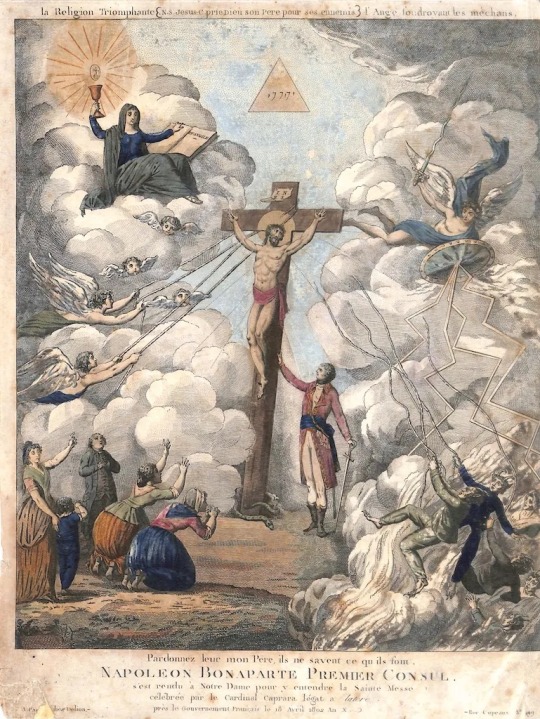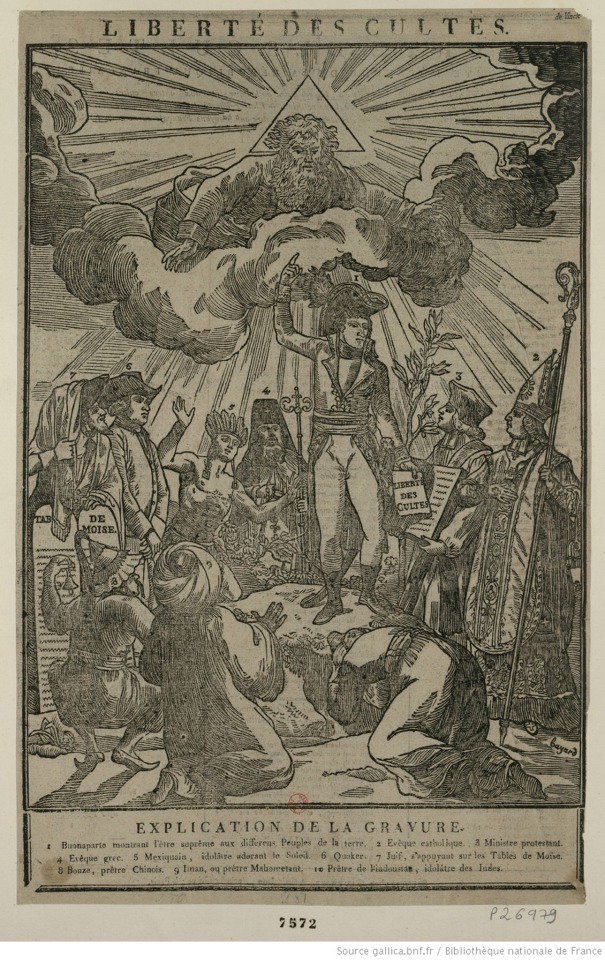#catholicism is a cult
Text

68 notes
·
View notes
Text
fuck catholics man honest to god. im so tired of going ooo im so sorry your religion brainwashed you you still have a choice when it comes to treating people with kindness and you choose not to. the shit catholics get up to is violence.
0 notes
Text
maybe it’s just my ex-catholics vibes, but the way evangelical christian circles treat mother mary and mary magdalene always rubbed me the wrong way.
their roles as disciples of christ are often so shamelessly downplayed that it’s laughable.
mary magdalene is never given any mention outside of “whore who closed her legs and repented” despite being one of jesus’ closest disciples and the first one to be notified that christ had risen. not to mention the belief that she was a prostitute before becoming a disciple is not biblically supported.
mary the mother gets the same treatment— albeit a further fall from grace given how highly regarded she is in catholicism. evangelicals remove every trait from mother mary except for her submission and willingness to get pregnant. they never talk of her anguish at the cross, or her hand in jesus’ ministry. they also shame the concept of veneration towards her. they teach that she was not born without sin, she was not assumed into heaven, and she cannot intercede on behalf of people who pray for her. she is essentially stripped of her title as “queen of heaven”. she’s just some woman who god picked to bear his child. there was nothing special about her and she receives no title or reward for her unimaginable struggle.
these women, and others like them, travelled alongside jesus and his apostles for their ministry journey. yet, you would never know according to evangelical teaching.
at the end of the day, catholicism is sexist as hell— but at least it gives mother mary and mary magdalene the honor and attention they deserve.
#|| the disciple ||#ex catholic#ex christian#folk catholicism#exvangelical#ex fundamentalist#ex fundie#ex cult#ex religious#catholic guilt#catholic trauma#religious trauma#deconversion#deconvert#losing my religion#apostate#folk saints#apostasy#mary magdalene#virgin mary
768 notes
·
View notes
Text

Despite being raised Catholic, I never really got a hold on what the different robes and colors meant. I remember my mom getting upset about the church we went to supposedly using the “wrong” colors or something around Easter or Christmas time.
anyway, post narilamb gay marriage catholic robe blasphemy
193 notes
·
View notes
Text
watching like an hour and a half long break down explaining all the connections Jesus as a mythological figure has connections with Dionysus and how that was somewhat recognized and understood in early Christianity and I realized the exact kind of cult I could fall for
#there were things I liked about Catholicism and it was all the things that made people uncomfortable#like the ritualistic cannibalizing of god#i loved that#i loved the concept of that#makes people uncomfy tho#even after I stopped believing in Catholisim or like god at all I was like 'hmmm might stick around for the cannibalism'#(i didn't stick around but still that would have been the reason I stayed if I had)#anyway the video made me connect things I already knew and just didn't put together#and it made me realize that a lot of my fascination with Dionysian cults align with what I liked about Catholicism#oops well if anyone wants to become a Maenad let me know
20 notes
·
View notes
Text

Old pic I really like!! I think I look cute and my figure looks divine here UwU
Keep boosting my ego >:3 might also start posting content soon that sounds fun :3
#196#bottomposting#hornyposting#uwu#thigh highs#bad dragon#i should start a cult like Catholicism where ppl eat me like they eat Jesus :3
113 notes
·
View notes
Text

The misconceptions about Genesis 1:28 explained:
“God blessed them, and God said to them, ‘Be fruitful and multiply, and fill the earth and subdue it; and have dominion over the fish of the sea and over the birds of the air and over every living thing that moves upon earth’.”
- Genesis 1:28
The phrase “be fruitful and multiply” will more than likely sound familiar to you whether it’s from your own experiences with religion, or from documentaries such as Shiny Happy People.
Regardless of if you have come across this phrase from religion or documentaries, you likely don’t know it’s true meaning.
While yes, “be fruitful and multiply” does objectively encourage the act of procreation, it does not mean that you have to have a large amount of kids. In fact, it doesn’t mean you are required to have kids at all.
The words “be fruitful and multiply” were said to Adam and Eve when they were first created. This sentence has no inherent value to anyone except those it was spoken to. Never once does the bible say not having kids is a sin. It heavily encourages you to have children, but does not say you have to.
Even if you do believe not having children is a sin, “be fruitful and multiply” still wouldn’t mean you have to have a lot of kids. Many people who believe motherhood is a calling of the bible believe all that is required to fulfil this goal is to have 2 children. One male, and one female.
After watching Shiny Happy People it became incredibly clear to me that many people misunderstand this verse. “Be fruitful and multiply” never meant anything beyond that Adam and Eve were required to have kids, and the only reason the IBLP said otherwise was to have more children to bring into their cult. IBLP’s goal was to raise a generation of kids who would take over the world. They did not care about the true meaning of this verse, they cared about power and control.
While not everyone who believes this verse inherently means you have to have a lot of children is tied to IBLP: It is an important distinction to make.
The idea that this verse means anything more than for Adam and Eve to have kids or for you to have one child male and one child female is a cult concept. It is directly created by a cult. That is not Christianity, it is a misogynistic p*doph*lic cult leaders lie.

#christian#christianity#iblp#iblp cult#catholic#catholicism#roman catholicism#roman catholic#bible#bible study#christian girl#christian teen#catholic girl#catholic teen#belief in jesus
22 notes
·
View notes
Text








Some Napoleonic era prints about the Concordat and freedom of religion
#Liberté des cultes#concordat#Napoleon#napoleon bonaparte#napoleonic era#napoleonic#prints#posters#print#first french empire#french empire#1800s#19th century#french revolution#frev#freedom of religion#history#france#Catholicism#christianity#the concordat#art#religion#religious art#french history
21 notes
·
View notes
Text
i'll never forget when I first found the youtube channel that's run by 2 of the former professors at my conservative Catholic college, and in one of their many long ass videos about theology one of them dropped that he considers having sex with his wife too often/taking too much pleasure in it to be a SIN, since he starts to look forward to it more than spiritual pursuits. so he is careful to limit how much he fucks his literal, actual wife. it explained a lot tbh.
the Catholics are a miserable people. i'm sorry but the Protestants don't even touch them for wallowing and over-thinking
#i think of catholicism like a cult#they function in similar ways#and also the only person in my group therapy sessions who could relate to my religious trauma was a cult survivor#not saying our experiences were interchangeable but like#not for nothing that we bonded#catholicism#blog
20 notes
·
View notes
Text
Fontanelle Cemetery in Naples is home to a fascinating cult. Known as the Cult of the Souls of Purgatory, its members hope to guide abandoned souls out of purgatory.
23 notes
·
View notes
Text
i’ve talked about dan’s nun outfit so much that my roommate who isn’t a phannie drew his oc in the dress. this is my power.
#going through my drafts#this is from like last year#his oc is named vessel he’s a tiefling cult leader#and we joke ship him with my oc named exodus#who is literally a like christian priest missionary dude#i made up a new sect of christianity for a modern fantasy world that combines mormonism and catholicism pretty much#that also is a little racist against non human races shhh#anyone can join promism anyone can be saved don’t think too hard about the entire congregation being mostly human shhh#but yea he came up with this idea of like dressing up as each other for a halloween party#and vessel wears the sexy nun fit#and snaps a picture to exodus who sends back a picture of him just wearing devil horns like 🧍🏻♂️#i can’t believe we predicted phil devil hoodie
7 notes
·
View notes
Text
Just my own humble view of Catholicism. You don't have to agree with me.
Baptizing an infant who has no idea what is going on or has any ability to refuse. This is wrong on so many levels.
Why?
Once you are baptized, you can't leave.
Oh there's a process if you really want to leave officially. I'm not sure how it works though except that they won't want to let you go so they'll make things as messy as possible.
Or you can just "lapse" and refuse to call yourself a Catholic.
However, as to the best of my knowledge, unless you go through the official process of leaving, you're still "on the books" as a Catholic.
This is all called "indoctrination". Babies aren't baptized. They're indoctrinated. Indoctrinated into a religion that they may not agree with when they're older.
And any group that doesn't want to let you leave and makes it damn near impossible to go? That, people, is a cult.
#just my opinion#former catholic#i survived 12 years of catholic school and hated every moment of it#catholicism is a cult#indoctrinated and forced into their religion#babies can't make decisions#proud pagan#proud witch#i promised i would never send my son to a catholic school and i never did
1 note
·
View note
Text
does watching a video essay on midnight mass (that i have not watched) count as research for haze dogs
#haze dogs has fantasy catholicism aka i make shit up like someone asked to explain catholicism from memory... which is what i'm doing#would you believe if i said i have never read the bible to completion or even one singular book of the bible start to finish lmao#i have a bible Somewhere that i might pick up for a couple if things in haze dogs#mainly the language around the resurrection and maybe revelations and the rapture#because Boy i just realised something about the ending#this video essay is making me think too about the 3 days until jesus' return after getting mega killed#and also stigmata. i need to give connor stigmata#the haze dogs have stigmata. one of them is missing its head and it's still kicking!#but also what if the body and blood of christ was fr fr in the eucharist of the town#i made a point that they have sheep around so the haze dogs attack them and not the people#they could dice up a sheep for mass and eat it during “mass” if that's what we wanna call connor's cult#or one of them. there's a couple people who want to use her as their golden calf lmao#but yeah <3#pia.txt#( wip ) haze dogs
8 notes
·
View notes
Text

By: Colette Colfer
Published: Jan 17, 2024
A slow-burning religious revolution is transforming Ireland. The Catholic Church has waned to a smidgin of its former significance and much of the enormous space it once occupied in the Irish psyche has been vacated. A gap has appeared. We need to mind this gap.
At the same time as Catholicism is declining in importance, a new belief system centred around the concept of gender identity is gathering momentum, thrusting roots deep into the cultural fabric of Irish society, and filling parts of the expanse previously occupied by Catholicism.
This new belief system has implications for all sectors of Irish society including education, sports, legislation, and the media. It also influences popular individual understandings of the self.
‘I am large, I contain multitudes’ wrote Walt Whitman (1819 – 1892) in his famous poem Song of Myself. The kaleidoscopic complexity of the individual is often eclipsed when those espousing gender identity theory magnify gender identity out of proportion to other facets of the self.
Although the idea of gender identity is considered secular in nature, there are many religious parallels. A certain level of faith is required to believe in the existence of the scientifically unfalsifiable intangible internal essence that is the gendered self. This disembodied sense of self, elevated in importance above the body, mirrors ideas about the soul. Sacrificial rites involving the removal of healthy organs assert the primacy of gender identity that is bestowed with a sacred quality.
There are echoes of holy days and religious seasons in new calendars listing dates associated with gender identity. These include Agender Pride Day (19th May), Non-Binary Awareness Week (in July), International Pronouns Day (20th October), and Transgender Awareness Month (November). There are also quasi-religious symbols, priest-like leaders, slogans that sound like mantras and compulsory articles of belief including that sex is ‘assigned’ at birth, that everyone has a gender identity, and that social transition and affirmation are the path to finding one’s true self (or salvation).
Societies are always changing. When 108-year-old Florence Pannell was interviewed on UK television in 1977 about growing up in Victorian England, she was asked what had changed most during her lifetime. Florence responded: ‘Everything! Nothing is the same! Everything is changed!’ To be alive is to be caught in a web of change. The rate of religious change in Ireland is happening faster than the rate of population change. The Irish population rose 46% from 3.5 to 5.1 million between 1991 and 2022. During the same period, the number of people with ‘no religion’ increased by over 1,000 per cent.1
Ireland in the 1900s was steeped in Catholicism. Church steeples punctured skylines symbolising the highest societal value and pinpointing the geographical locus of the community. Streets and remote country roads were dotted with grottos of the Virgin Mary. Silhouettes of huge crosses were visible on hills and rocky outcrops. Weeks revolved around Sunday mass. People’s entire lifelines were patterned with religious rituals.
Catholicism in Ireland reached its peak in 1961 when Roman Catholics made up a phenomenal 94.9 per cent of the population. Since then, however, the proportion of Catholics has been in decline. By 2022 it had dropped to 69% and since then, the tide of Catholic belief has been receding further still.
Receding tides require attention. In 1907, a tidal wave resulted in the deaths of 70% of the inhabitants of Simeuleu in Indonesia. Survivors told the story of an earthquake followed by a receding sea and then a tidal wave. They referred to the sequence of events as smong. Stories of smong were passed down through the generations in popular lullabies and poems.
When a devastating tsunami in the Indian Ocean on the 26th of December 2004 killed an estimated quarter of a million people, the island of Simeuleu was an anomaly in the region as there was only a minimal loss of life. Just seven victims were recorded from the population of almost eighty thousand. The high survival rate was accredited to the stories of smong. Islanders had recognised the signs of the retreating sea after an earthquake and had rushed to higher ground.
Declining religious adherence has potentially important implications. Sascha Becker and Hans-Joachim Voth point out, for example, that: ‘As the role of religion in public life declined from the late 19th century onwards, new ideologies and totalitarian world-views spread’. Becker and Voth mention that the ideologies of both Communism and Naziism were more popular in highly secularised areas of interwar Germany.
The decline of Catholicism in Ireland and the concomitant increase of those with no religion warrants careful consideration. Catholicism has faded significantly from the public sphere, scarpered from centre stage to a quieter corner in the wings. The stage is now peopled by those proclaiming the new gospel of ‘equality, diversity, inclusion’ and the stage is festooned with sacralised Progress Pride flags signalling the adoption of gender identity theory. The ideology of nationalism has more recently made a notable public appearance side stage and new belief systems or older ideologies could also emerge and rise to prominence.
Ireland’s National Census of 2022 indicates a religiously heterogeneous society with over fifty separate categories of religion outlined. This compares to the National Census of 1981 when just eight separate categories of religion were recorded and all the Christian denominations combined constituted 99.4% of the total population. A look at just some of the 2022 categories and numbers of adherents gives an indication of the level of religious change: Islam: 81,930; Hindu: 33,043; Taoists: 200; Scientologists: 132; Satanism: 189; Jedi Knight: 1,800, Jehovah’s Witness: 6,332; Buddhist: 9,053. A low-key online campaign in the run-up to the 2022 Census encouraged those with concerns about gender identity theory to identify their religion on the census form as ‘Believer in Biology’. Although the official census data did not publish details, a Freedom of Information request showed that at least 163 of the 8,064 in the ‘Other stated religion’ category identified their religion as ‘Believer in Biology’.2
Minding the gap vacated by traditional religion that is currently being filled, at least in part, by gender identity theory involves paying careful attention to the latest top-quality research on gender dysphoria, following best medical practice, developing guidelines based on evidence rather than ideology, allowing space for a diversity of beliefs and for healthy civil discussion that allows open conversation and respectful dialogue about the implications of gender identity theory on wider society including on single-sex spaces, sports, and children’s psychological and physical well-being.
The highest point in the urban skyline of Ireland today is the satellite pylon rather than the church steeple. This signals a switch in societal values and the locus of community formation. Social media is where new belief systems are promulgated and where younger generations are most likely to seek and find meaning. The trains of communication in the internet era are fast-moving. Mind the gap.
-
According to the National Census, 66,270 people had no religion in 1991. This rose to 736,210 in 2022 – a difference of 1,011% ↩︎
The numbers for ‘Believer in Biology’ only include records processed after November 2022. ↩︎
==
This speaks to the "Substitution Hypothesis," which suggests that as traditional religions decline, other quasi- and religious-like practices fill the void to satisfy human tendency towards religiosity.
#Ireland#Colette Colfer#substitution hypothesis#gender ideology#queer theory#catholic church#catholic#roman catholic#catholicism#decline of religion#empty the pews#leaving religion#rise of the nones#gender cult#gender thetans#genderwang#sexed soul#genderism#gender identity#believer in biology#religiosity#religion is a mental illness
5 notes
·
View notes
Text
I see posts from former catholics and hear from former catholics about their experiences and It really reminds me How Catholic Amane's Cult is.
It's all the weird stuff about who deserves what and believing in god and guilt and taken to the logical extreme. I know people whose teachers Told Them that if they feel Uncomfortable In A Dark Place and look around that means they don't trust in god enough and that The Devil won or something. I know people who were taught to feel guilty over being happy because not everyone is. I know people who were taught to be perfect humble saints or else they would waste all the effort people put Into Them.
It's just...Amane's cult really feels like the logical extreme of that kind of thinking and Im wondering if that's on purpose again.
9 notes
·
View notes
Text
trad catholic who rejects the conclusions of vatican II
nazi ⤴
#|| the disciple ||#vatican ii#ex catholic#ex christian#exvangelical#ex fundamentalist#ex cult#folk catholicism#religious trauma#ex fundie#apostate#apostasy#catholic guilt#ex religious#deconversion#leaving the church#deconvert#catholic trauma#ex evangelical#losing my religion
46 notes
·
View notes